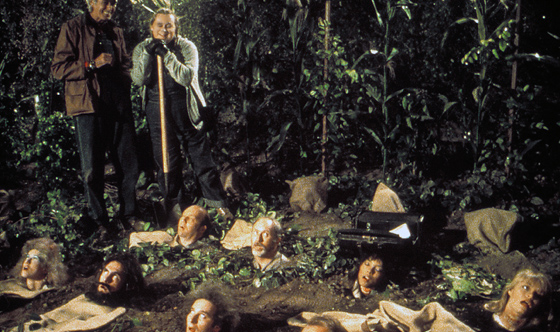We often trust nature more than we do people, but poison of one sort or another exists in both. In the long run–maybe the short one?–we’ll need genetically modified crops to feed the world. Some among us, however, reflexively recoil at genes being traded among species, even though nature has always done just that with plants–and humans. From the Economist:
OPPONENTS of genetically modified crops often complain that moving genes between species is unnatural. Leaving aside the fact that the whole of agriculture is unnatural, this is still an odd worry. It has been known for a while that some genes move from one species to another given the chance, in a process called horizontal gene transfer. Genes for antibiotic resistance, for example, swap freely between species of bacteria. Only recently, though, has it become clear just how widespread such natural transgenics is. What was once regarded as a peculiarity of lesser organisms has now been found to be true in human beings, too.
Alastair Crisp and Chiara Boschetti of Cambridge University, and their colleagues, have been investigating the matter. Their results, just published in Genome Biology, suggest human beings have at least 145 genes picked up from other species by their forebears. Admittedly, that is less than 1% of the 20,000 or so humans have in total. But it might surprise many people that they are even to a small degree part bacterium, part fungus and part alga.
Dr Crisp and Dr Boschetti came to this conclusion by looking at the ever-growing public databases of genetic information now available. They did not study humans alone. They looked at nine other primate species, and also 12 types of fruit fly and four nematode worms. Flies and worms are among geneticists’ favourite animals, so lots of data have been collected on them. The results from all three groups suggest natural transgenics is ubiquitous.
To avoid getting bogged down in the billions of base pairs of an animal genome the researchers looked at what is known as the transcriptome. This is the set of messenger molecules, made of a DNA-like chemical called RNA, that pick up instructions on how to make proteins from genes in the nucleus and deliver them to the subcellular factories which turn those proteins out. Broadly speaking, each type of messenger RNA corresponds to a single gene. By looking at the messengers Dr Crisp and Dr Boschetti could be certain they were recording active genes and not stretches of nuclear DNA that had once been genes but now no longer work.•
Tags: Alastair Crisp, Chiara Boschetti

